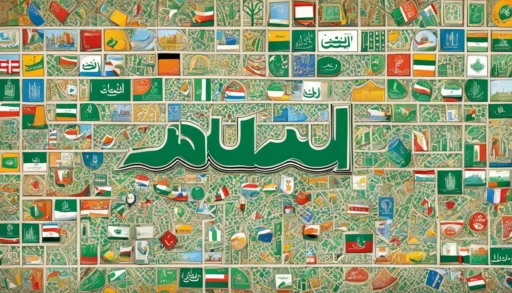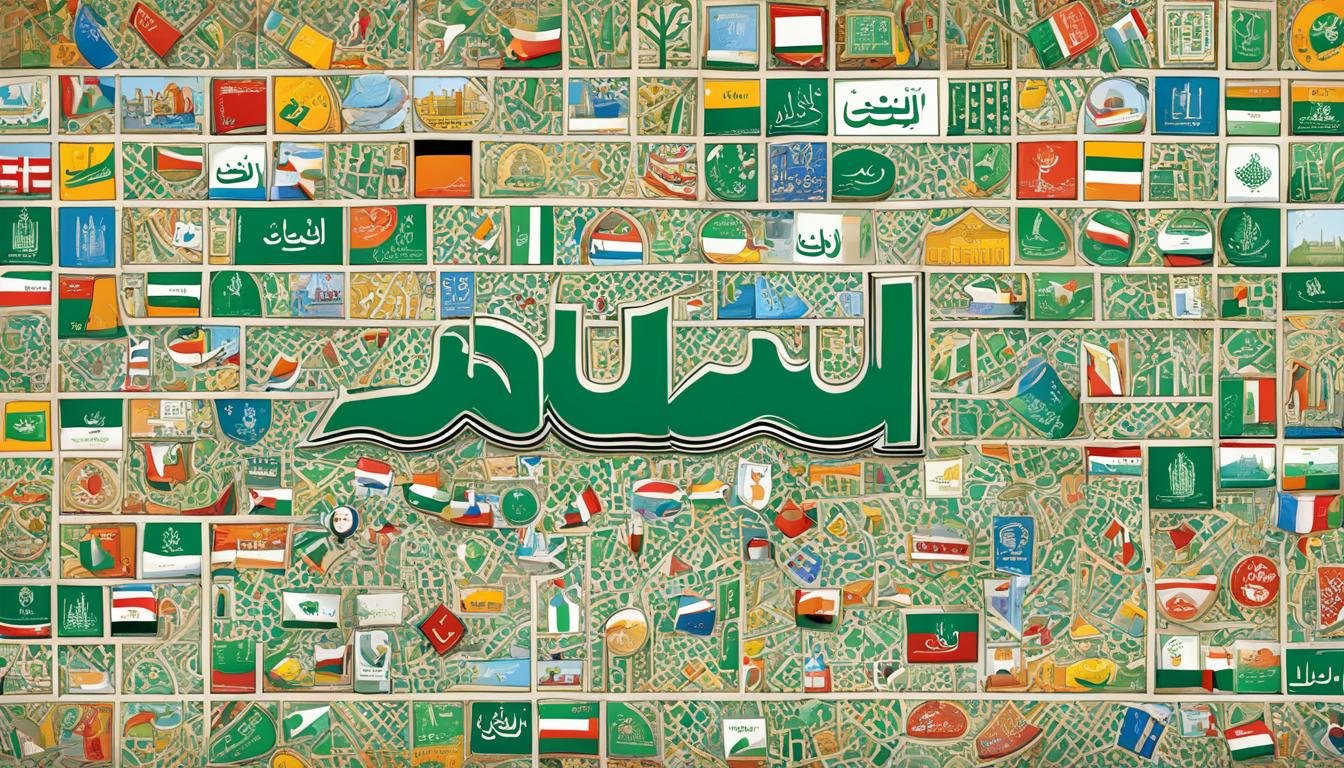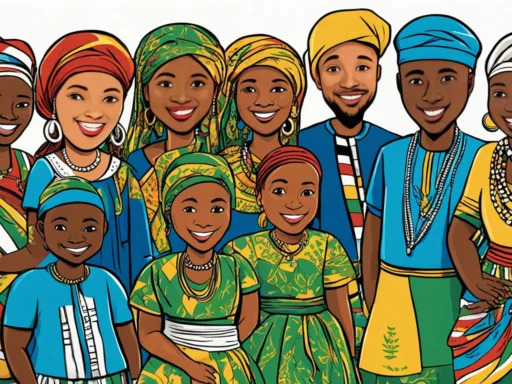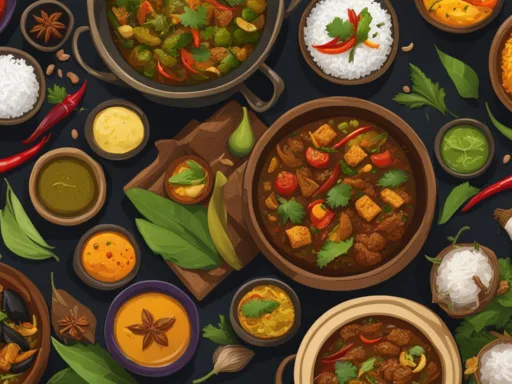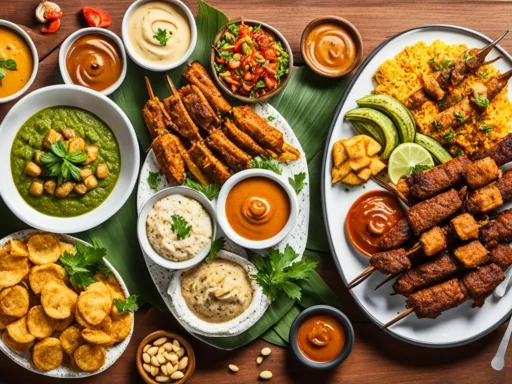Amidst the sands and urban developments, a surprising fact often escapes the global narrative: approximately 10% of Saudi Arabia’s population speaks languages that originate far beyond its borders. This vibrant statistic underscores the linguistic diversity in Saudi Arabia, a kingdom more traditionally recognized for its oil reserves than its polyglot populace. While Arabic in Saudi Arabia remains the lingua franca, painting the official portrait of nationhood, an array of other tongues weaves through daily life, each thread contributing to the country’s expansive cultural tapestry.
The blend of languages spoken in Saudi Arabia serves as a testament to its economic allure and social fabric. The nation’s thriving oil industry and rapid development have attracted a vast expatriate workforce, scaffolding not only the economy but also the linguistic landscape with their native dialects and languages.
Key Takeaways
- Arabic serves as the official language of Saudi Arabia and is the foundation of the nation’s identity.
- Significant expatriate populations contribute to the linguistic diversity of the kingdom.
- English is mandatory in schools and is widely used in business, signifying its importance as a global lingua franca.
- Bilingual road signage in Arabic and English showcases the country’s adaptability to international visitors.
- The coexistence of various languages reflects Saudi Arabia’s multifaceted society and cultural inclusivity.
- Linguistic diversity within Saudi Arabia fosters a vibrant intercultural dialogue among its populace.
The Predominance of Arabic in Saudi Arabia
The tapestry of language in Saudi Arabia is rich and textured, but it is Arabic that holds the fabric together as the official language of the nation. It is through the nuances of Arabic dialects that cultural identities are expressed and preserved, yielding a linguistic landscape as diverse as the people themselves.
Variants of Arabic Language
Among the Arabic dialects in Saudi Arabia, several regional forms have evolved, each with distinctive features and cultural significance. The desert heartland gives voice to Najdi Arabic, while the coastal stretches on the Red Sea resonate with the tones of Hejazi Arabic. Along the shimmering coastline of the Persian Gulf, Gulf Arabic lends itself to the sea’s rhythm. These dialects are not just modes of communication but are integral to Saudi Arabia’s cultural and social identity.
Modern Standard Arabic and Its Role
Modern Standard Arabic (MSA) is the linchpin in the framework of linguistic unity across the Arab world, serving a pivotal role in Saudi Arabia’s education, media, and official documentation. As a standardized and universally taught version of Arabic, MSA bridges the gaps between disparate dialects, allowing for fluid communication and official discourse. It is the cornerstone that ensures mutual understanding amongst the Arabic-speaking population.
Classical Arabic in Religious Contexts
Resonating with the profound history of the region, Classical Arabic is of special prominence in religious contexts. As the language of the Quran, it holds an undeniable sacred standing in Islam, influencing the cultural fabric of Saudi Arabia on both spiritual and academic levels. Preserved in scripture and cherished in liturgy, Classical Arabic serves as an enduring link to the nation’s Islamic heritage and scholastic endeavors.
Dialects of Arabic Across Saudi Regions
Exploring the various dialects in Saudi Arabia reveals a linguistic panorama as diverse as the country’s geography. From the heart of the desert to the bustling coastal cities, each region’s distinct dialect echoes its unique cultural identity and heritage. The following details delve into the complexity of these regional dialects, highlighting the nuances that distinguish them.
Najdi Arabic and Its Sub-Dialects
The heartland of Saudi Arabia is home to Najdi Arabic, a central fixture among the dialects in Saudi Arabia and one that has laid down deep linguistic roots within the kingdom. With an estimate of over 14 million speakers, this dialect’s influence is felt far and wide through its additional variants:
- Northern Najdi: A dialect with a harsher tone, reflective of the arid deserts and tough terrains.
- Central Najdi: Spoken in the nation’s capital, Riyadh, it’s considered the most prestigious among Najdi Arabic sub-dialects.
- Southern Najdi: Found in the southern reaches of the Najd plateau, it includes some distinct features influenced by neighboring dialects.
- Badawi Najdi: This dialect spreads through the nomadic Bedouin tribes, known for its poetic eloquence and ties to the desert lifestyle.
The Hejazi Dialect in the Western Province
Along the Red Sea, in the Western Province, the Hejazi dialect resonates through historical cities like Mecca and Jeddah. It’s a melodic dialect that vividly reflects the region’s mercantile history and cosmopolitan heritage. The Hejazi dialect, with around 10.3 million speakers, can be divided further into urban and rural variations—each influenced by centuries of trade and pilgrimage that shape this cultural epicenter.
Gulf Arabic Along the Persian Gulf Coast
The shores of the Persian Gulf harbor another facet of Saudi Arabia’s linguistic landscape—Gulf Arabic. With close linguistic ties to dialects across the Gulf nations, it’s speaking by almost a million inhabitants along the coastal regions. This dialect is renowned for its open vowels and certain unique lexical items distinguishing it from its inland counterparts.
As we traverse from the central plateaus through the historical western cities and towards the gleaming Persian Gulf coast, it becomes evident that each Arabic dialect operating within Saudi Arabia is a representation of the kingdom’s diverse legacy and regional pride. These dialects are not mere tools of communication but have played a pivotal role in shaping and expressing the identities of the Saudi people.
Linguistic Diversity: Expatriates and their Languages
The Kingdom of Saudi Arabia is a cultural tapestry woven with a multitude of languages spoken by its residents. The linguistic diversity in Saudi Arabia is significantly enriched by the presence of expansive expatriate communities. Bringing with them their native tongues and cultural expressions, these vibrant minorities contribute to the ever-growing cultural richness of the country.
While Arabic remains the lingua franca, binding the population in a common thread, the languages spoken in Saudi Arabia extend well beyond the indigenous speech. The kingdom has turned into a global crossroads where languages from Asia and elsewhere are seamlessly integrated into the social landscape. This linguistic phenomenon underscores the immense cultural and social influences that expatriates have woven into the fabric of Saudi society.
Amidst the bustling markets and cosmopolitan cities of Saudi Arabia, one can hear languages such as Tagalog, the mellow tones of Rohingya, and the melodic rhythm of Urdu—all symbolic of foreign languages in Saudi Arabia. Here’s a snapshot of these language communities:
| Language | Community Size | Notable Presence In |
|---|---|---|
| Tagalog | 700,000 | Labor and Technical Fields |
| Rohingya | 400,000 | Migrant Workers |
| Urdu | 390,000 | Expatriate Entrepreneurs and Professionals |
| Saudi Sign Language | 100,000 | Deaf and Hard of Hearing Communities |
These figures exemplify the mosaic of cultures found within the nation’s borders, enhancing the already rich tapestry of linguistic diversity in Saudi Arabia. It is through these languages that the expatriates maintain their heritage and forge connections within the broader backdrop of Saudi culture.
Moreover, Saudi Sign Language stands out as an embodiment of inclusivity, enabling around 100,000 individuals to engage and participate in society fully. This language of gestures and expressions is crucial in shaping an integrated community that values each of its members.
The confluence of these various mother tongues paints a picture of a society that is not only harmonious in its shared customs but also vibrant and diverse in its cultural expressions. In every corner of Saudi Arabia, from the office towers to the schoolyards, the symphony of languages makes for an enriching and inclusive narrative — one where every voice is heard and every culture celebrated.
English in Saudi Arabia: A Second Language for Many
With globalization taking center stage, the role of English as a second language in Saudi Arabia has been increasingly vital. English in Saudi Arabia represents not only a necessary skill for cross-border communication but also a stepping stone towards bilingualism, especially among the younger generation.
English in Education
The Saudi education system lays a robust emphasis on English language acquisition, intertwining it with cultural fluency to foster global competencies. Here’s how English is integrated into Saudi educational institutions:
- Introduction to English starts in primary school, expanding vocabulary and basic linguistic structure.
- Secondary schools emphasize advanced language skills, preparing students for university-level education and professional environments.
- Universities offer a variety of English-taught programs, highlighting the institution’s recognition of English proficiency as a fundamental skill in higher education and research.
English in Business and International Communication
In the realm of commerce, proficiency in English is a crucial asset that facilitates transactional activities within the global marketplace:
- Business contracts, negotiations, and correspondence often mandate a clear understanding of English to ensure seamless international trade.
- Many Saudi companies invest in English language training for employees to enhance operational efficiency and to expand their reach beyond local markets.
- International conferences and symposiums hosted in the Kingdom predominantly operate in English, bridging cultures and fostering multinational partnerships.
| Area of Use | Impact of English | Percentage of Bilingual Speakers |
|---|---|---|
| Educational System | Core curriculum subject from primary through tertiary education | 60% |
| Business Environment | Primary language for international business and trade | 75% |
| Government and Law | Utilized for international regulations and diplomacy | 50% |
| Technology and Research | Crucial for access to global scientific knowledge | 80% |
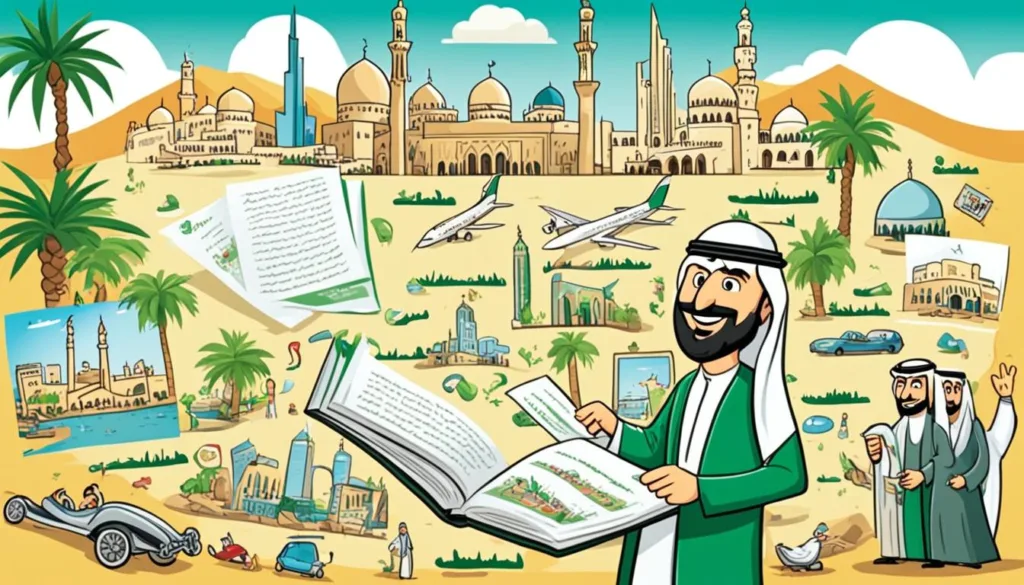
The steadfast commitment to English in Saudi Arabia undeniably nurtures bilingualism among its citizens, setting a standard for English as a second language and solidifying the nation’s competitive edge on the world stage.
Minority Languages and Global Connections
The cultural landscape of Saudi Arabia is enriched by the diverse minority languages in Saudi Arabia, which reflect the presence of extensive foreign communities. These languages are a direct consequence of Saudi Arabia’s position as an economic powerhouse, able to attract a global expatriate workforce enriching the kingdom with their unique linguistic and cultural heritage.
| Community | Language | Approximate Number of Speakers |
|---|---|---|
| Filipino | Tagalog | 700,000 |
| Burmese | Rohingya | 400,000 |
| Pakistani | Urdu | 390,000 |
While the official language, Arabic, unites the country’s citizens, the linguistic fabric is woven with threads from all over the world. This rich tapestry of global expatriate languages not only contributes to daily life but also to the collective economic and social exchanges that connect Saudi Arabia to the global community.
- Tagalog is not just a language, but a chord that binds the Filipino workers with their traditions while they navigate life in Saudi Arabia.
- Rohingya, a linguistic representation of resilience, keeps the flame of Burmese culture alight in the heart of Arabia.
- Urdu, with its poetic cadence, conveys the spirit of Pakistani communities as they contribute to the bustling Saudi economy.
This linguistic diversity is crucial for fostering a vibrant cultural exchange and facilitating international dialogue within Saudi Arabia’s borders. The kingdom, thus, stands as a beacon of multicultural connectivity in the modern world.
languages spoken Saudi Arabia
In the cosmopolitan cities and bustling neighborhoods of Saudi Arabia, the air resonates with an array of languages that reflect its diverse expatriate community. Beyond the official language of Arabic, the sounds of Tagalog, Rohingya, and Urdu highlight the vibrant cultural mosaic within the kingdom. These languages represent not only communication tools but also cultural heritage, offering a glimpse into the lives of those who have journeyed far from their native lands to work and live in Saudi Arabia.
Tagalog Among the Filipino Community
Tagalog in Saudi Arabia is more than just a linguistic presence; it’s a vital social connector for an estimated 700,000 Filipinos who call Saudi Arabia their second home. From the bustling corridors of hospitals to the intricate networks of construction sites, Tagalog-speakers add a unique dimension to Saudi’s social fabric.
Rohingya: The Language of Burmese Expats
Rohingya language in Saudi Arabia serves as a poignant reminder of the resilience and cultural identity of about 400,000 Burmese expatriates. Unlike its primarily written use in Myanmar, the Rohingya language here unfolds in spoken form, allowing its users to maintain a strong community bond.
Urdu Spoken by Pakistani Workers
The Urdu language in Saudi Arabia cements the cultural and communicative needs of nearly 390,000 Pakistani workers. This lingua franca creates a sense of familiarity and belonging, fostering communal ties in a foreign land.
Each language thread weaves into the fabric of Saudi society, making it an eclectic tapestry of voices and stories. Below, a comparative look emphasizes the importance of these languages among their respective communities.
| Community | Language | Approximate Number of Speakers |
|---|---|---|
| Filipino | Tagalog | 700,000 |
| Rohingya | Rohingya | 400,000 |
| Pakistani | Urdu | 390,000 |
The Cultural Significance of Language in Saudi Society
The intricate mosaic of linguistic diversity in Saudi Arabia serves as a testament to the kingdom’s profound cultural diversity. The fabric of society here is stitched together with the expressive fibers of the Arabic language, interwoven with tongues from around the globe. Each thread contributes a unique color, strength, and texture, articulating the societal values and community narratives.
It’s linguistics that marks the pulse of cultural life, not just simplifying transactions, but transforming words into a heritage to be lived, shared, and treasured. The significance of the Arabic language extends into every corner of Saudi life, from bustling marketplaces to the quietude of homes, mirroring the depths of its heritage.
Within the kingdom’s borders lie voices of a global community—each sharing their own melody but contributing to a harmonic symphony. This polyglot society is a direct reflection of linguistic diversity in Saudi Arabia, embracing not only the region’s Arabic nuances but also the cultural complexities of its international residents.
In each greeting, negotiation, and story told, language reveals the textured contours of Saudi’s cultural identity. It fosters inclusivity and cross-cultural interaction, resonating with the kingdom’s commitment to a unified yet diversified society.
The palpable effect of language on culture can be seen in its myriad forms—from the majesty of written prose to the vivacity of spoken dialects. The Arabic vocabulary offers a prime example, carrying more than just meaning, but bestowing rhythm and soul into the very fabric of Saudi life.
- The traditional markets where the bartering voice carries the Hejazi dialect.
- School courtyards where Modern Standard Arabic weaves together the stories of children.
- Boardrooms where linguistics undergird discussions in multiple languages.
Ultimately, the interlacing of languages signifies a society that cherishes its roots while reaching for the cosmopolitan heights that the future holds. The narrative of linguistic diversity not only acknowledges but also celebrates the many voices that together speak of a Saudi Arabia rich in tradition and ripe with opportunity.
The Role of Arabic and Its Dialects in Local Customs
The intricate tapestry of dialects and languages in Saudi Arabia is not merely a means for everyday conversation; it represents the heartbeat of the nation’s enduring customs and cultural ethos. The role of Arabic in Saudi Arabia stretches into every facet of local life, echoing the unique stories of its regions and their inhabitants. As a vehicle for maintaining regional identities, Arabic dialects serve as a cultural compass guiding one through the rich heritage of the Kingdom.
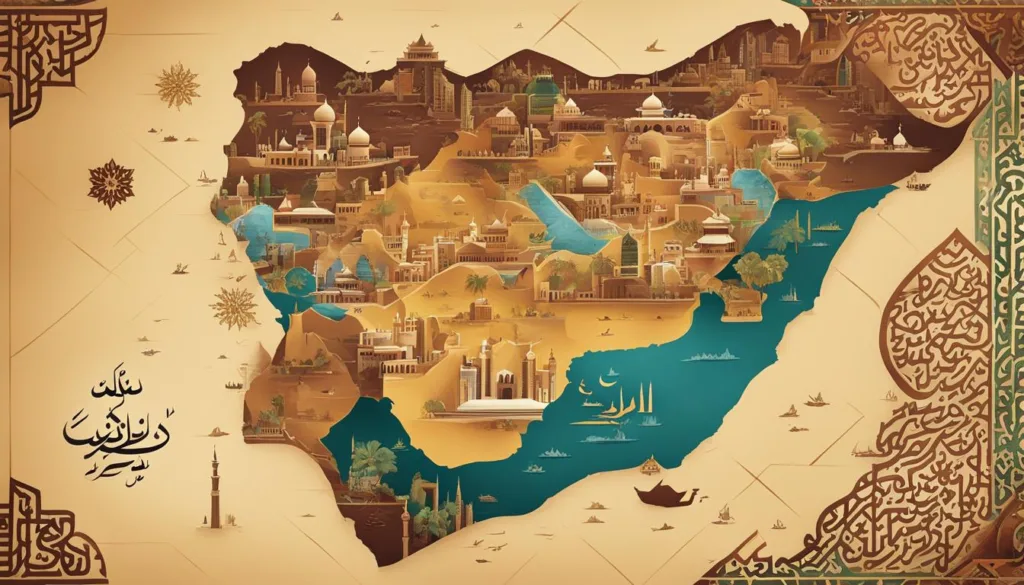
Dialects Reflecting Saudi’s Regional Identities
In the bustling markets of Riyadh, the Najdi dialect resounds, marking the historical essence of the central plateau. In the ports of Jeddah, the lilting notes of Hejazi Arabic merge with the scent of the Red Sea breeze, painting a vivid picture of Saudi’s western cultural landscape. The shores of the Eastern Province whisper in Gulf Arabic, narrating tales of commerce and connection across the Persian Gulf.
Language as an Expression of Heritage
Arabic is not just used in daily interaction but is also a guardian of tradition during festivals and ceremonies. The perpetuation of local customs through oral traditions, stories, and songs, all performed in the region’s own dialect, ensures that the legacy of the Saudi people is preserved and passed on to future generations. This linguistic heritage is a cornerstone to the region’s identities, tying the present to the past and the future to both, through the enduring threads of language.
Saudi Sign Language: Inclusivity in Communication
Communication is the bedrock of community and connection. In Saudi Arabia, the commitment to inclusivity in communication is exemplified through the support and recognition of Saudi Sign Language. With a clear understanding that inclusive dialogue is essential, Saudi Sign Language is the key to unlocking a world of interaction for the deaf community in Saudi Arabia.
This silent but expressive language forms a crucial bridge between the hearing and the deaf, allowing for an exchange of ideas, emotions, and knowledge. As an integral part of inclusivity efforts, sign language ensures that the approximately 100,000 individuals who are deaf or hard of hearing are an active part of the societal narrative—be it in education, social engagements, or cultural participations.
| Aspect of Inclusivity | Impact on Deaf Community | Role of Saudi Sign Language |
|---|---|---|
| Education | Access to academic content and peer interaction | Facilitating learning and classroom communication |
| Cultural Events | Understanding and appreciating heritage and arts | Translating performances and art narratives |
| Social Engagement | Ability to form relationships and community bonds | Offering a platform for socializing and expressing identity |
| Employment | Opportunities for career growth and independence | Providing the means for professional training and workplace communication |
By fostering environments where Saudi Sign Language is incorporated and accepted, the kingdom empowers a significant portion of its population, reinforcing the value of every citizen. It is both a social imperative and a moral commitment to ensure that communication in Saudi Arabia is an inclusive, collaborative process that honors the diversity of its people.
Learning Resources for Arabic and Its Dialects
For learners venturing into the beautiful complexity of Arabic and its regional dialects, a multitude of Arabic learning resources are available that cater to both the novice and the advanced student. These resources not only provide insights into Modern Standard Arabic but also delve into the nuanced variants such as Najdi and Hejazi Arabic, crucial for those wishing to grasp the cultural depth of Saudi Arabia.

Print and Online Arabic Dictionaries
The cornerstone of mastering any language is a good dictionary, and for Arabic, there are both esteemed print options and accessible online tools. A definitive resource is “A Dictionary of Modern Written Arabic” by Hans Wehr, a comprehensive guide cherished by learners. Likewise, online platforms like Glosbe serve as an extensive database, offering instant translations and definitions within various contexts. These Arabic dictionaries are invaluable for building a robust vocabulary and understanding subtle linguistic differences.
Language Aids for Non-Arabic Speakers
For those who do not speak Arabic as a first language, numerous language aids for Arabic assist in conquering potential linguistic barriers. Authors like Bruce Ingham and Nicholas Awde have crafted grammar guides which enrich one’s learning with structure and enable non-native speakers to construct clear, correct sentences. Additionally, Forvo’s pronunciation dictionaries bring words to life, providing the audible means to refine your pronunciation. Whether you are tackling grammar or honing your spoken Arabic, these aids are essential companions on your language journey.
| Resource Type | Description | Best For |
|---|---|---|
| Print Dictionaries | Comprehensive guides like Hans Wehr’s dictionary for Modern Written Arabic. | Deep understanding of words and meanings. |
| Online Dictionaries | Platforms such as Glosbe offer a vast range of translations and contextual uses. | Quick look-up and contextual examples. |
| Grammar Guides | Books that offer detailed explanations of Arabic grammar and sentence structure. | Non-Arabic speakers learning to write Arabic correctly. |
| Pronunciation Tools | Forvo and similar services allow you to hear native speakers pronounce words and phrases. | Perfecting spoken Arabic pronunciation. |
Conclusion
The cultural tapestry of Saudi Arabia is vividly illustrated through its intricate web of languages, encapsulating the historic depth and modern vibrancy of the kingdom. Far beyond the homogeneity of one tongue, Saudi Arabia stands as a beacon of embracing linguistic diversity, with each dialect and imported language enriching the country’s societal weave. Predominant Arabic dialects resonate with the authenticity of regional cultural identities, while the array of languages brought forth by expatriates hums with tales of distant lands and global narratives embedded in the heart of the kingdom.
Embracing Linguistic Richness in Saudi Arabia
In the embrace of this linguistic richness, Saudi Arabia not only guards its heritage but also opens its arms to global influences, fostering a multicultural dialogue and enhancing communal bonds. It is this variety that strengthens the social fabric, offering a myriad of perspectives and facilitating connections among people from all walks of life. As the country continues to welcome expatriates and nurtures its heritage, its commitment to acknowledging and preserving linguistic diversity remains pivotal to its cultural integrity.
The Future of Multilingualism in the Kingdom
Looking to the future of multilingualism in Saudi Arabia, the forecast is marked by optimism and anticipation. As the kingdom fortifies its position on the international stage, the role of multiple languages in education, commerce, and everyday life is expected to magnify, forging an even more inclusive and dynamic society. In this evolving scene, language will not merely be a medium of exchange but a bridge toward a collective future, where cultural understanding thrives and diversity is celebrated. Truly, Saudi Arabia stands poised to redefine the contours of global communication and cultural exchange in the forthcoming era.
